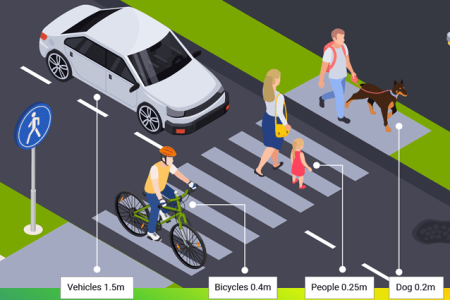Lidar, which refers to light detection and ranging, is a technology that has been adopted in various applications such as mapping, surveying, military, archaeology, agriculture, geology, industry, etc. Many use scenarios are already quite mature. Lidar has been talked about with increasing interest, largely from the popularity of autonomous vehicles and its potential in emerging industrial applications and robotics. Just within the automotive sector, the lidar for the automotive market is expected to grow to US$8.4 billion by 2023.
The History of Lidar
Lidar has existed for decades, and its development path has experienced four stages. It was developed not long after the invention of the laser around the 1960s. Its ranging function was developed for aerospace and defense purposes initially. Later lidars could also be used to measure angles and velocity. Commercial and industrial lidars rose in the 1980s, and the 1990s benefited from the development of diode systems. A single-line scanning system enables lidars to be used in other applications. In addition, GPS, with accuracy to centimeter level, promoted the combination of lidars and positioning systems. These areas of progress have allowed lidars to be deployed in industrial and early-stage autonomous vehicle projects. It was not until the 2000s that lidars started to be applied in commercial, automotive applications. Since the commercial production of the first lidar in 2017, an increasing number of players have focused on automotive applications, especially autonomous vehicles. From 2020 onwards, with the autonomy levels moving towards L3, the lidar industry has also welcomed its speedy progression. Lidars have received huge investments and are moving towards chips and arrays with better performance.
Lidar for Automotive Autonomy
Autonomy is another big trend after electrification in the automotive sector. Automotive autonomy can potentially change our lifestyle and also offer huge business opportunities for existing and emerging technologies. An important part of autonomy is sensing and recognition. Sensors such as cameras, ultrasonic systems, and radars can already provide useful information for this purpose. However, none of them are perfect. For instance, a camera offers color and high-definition images but suffers from poor depth information and can be easily affected by the sun. An ultrasonic system is very cheap but has a very short detection range. A radar is quite robust in bad weather conditions but gives a very poor resolution. A radar’s typical 2-3° angular resolution makes most object detection challenging. For example, 2° at 100m cannot distinguish a distance larger than 3.4m.
On the other hand, lidar can compensate for the disadvantages of other sensors. For instance, it can provide high resolution (e.g. 0.1°) and information not easily affected by the light condition.
The innovation of lidar beam steering technologies made 3D landscape mapping and scanning easier, enabling machines, including automotive and robots, to acquire a precise 3D map of the world with depth information. This function of 3D lidar can make automotive reach higher autonomy, offering complementary information and providing redundancy to realize better safety. The huge demand and investment of the automotive industry can also speed up lidar development and cost reduction. This helps them be cheaply manufactured and widely adopted in larger application areas with potential huge quantities.
Opinions on which sensors to include in an ADAS/AV system are controversial as they involve different cost structures. In addition, more sensors can also generate confusing information, leading to a more difficult decision-making process. However, as time goes by, more OEM and Tier-1 companies believe lidar should be included in the sensor suite for redundancy purposes. As the AV evolves to higher levels of autonomy, this demand becomes more obvious.
Future Opportunities for Lidar Components
The lidar development provides opportunities to various industries and players within the supply chain. Lidar hardware can be simplified as a combination of a few major component modules. For example, beam steering mechanisms have attracted tremendous attention and innovations. They enable 3D scanning and determine the lidar reliability. However, equal attention should be given to transmitter and receiver modules as they will largely determine lidar performance and play an important role in further cost reduction. Control and processing modules, on the other hand, usually have higher technology barriers and can also offer space for price drops. Understanding the whole supply chain from materials, and components, to systems, can assist in better strategic decision-making.
To read more news and exclusive features see our latest issue here.
Never miss a story… Follow us on:
![]() Security Buyer UK
Security Buyer UK
![]() @SecurityBuyerUK
@SecurityBuyerUK
![]() @SecbuyerUK
@SecbuyerUK
Media Contact
Rebecca Morpeth Spayne,
Editor, Security Portfolio
Tel: +44 (0) 1622 823 922
Email: editor@securitybuyer.com













